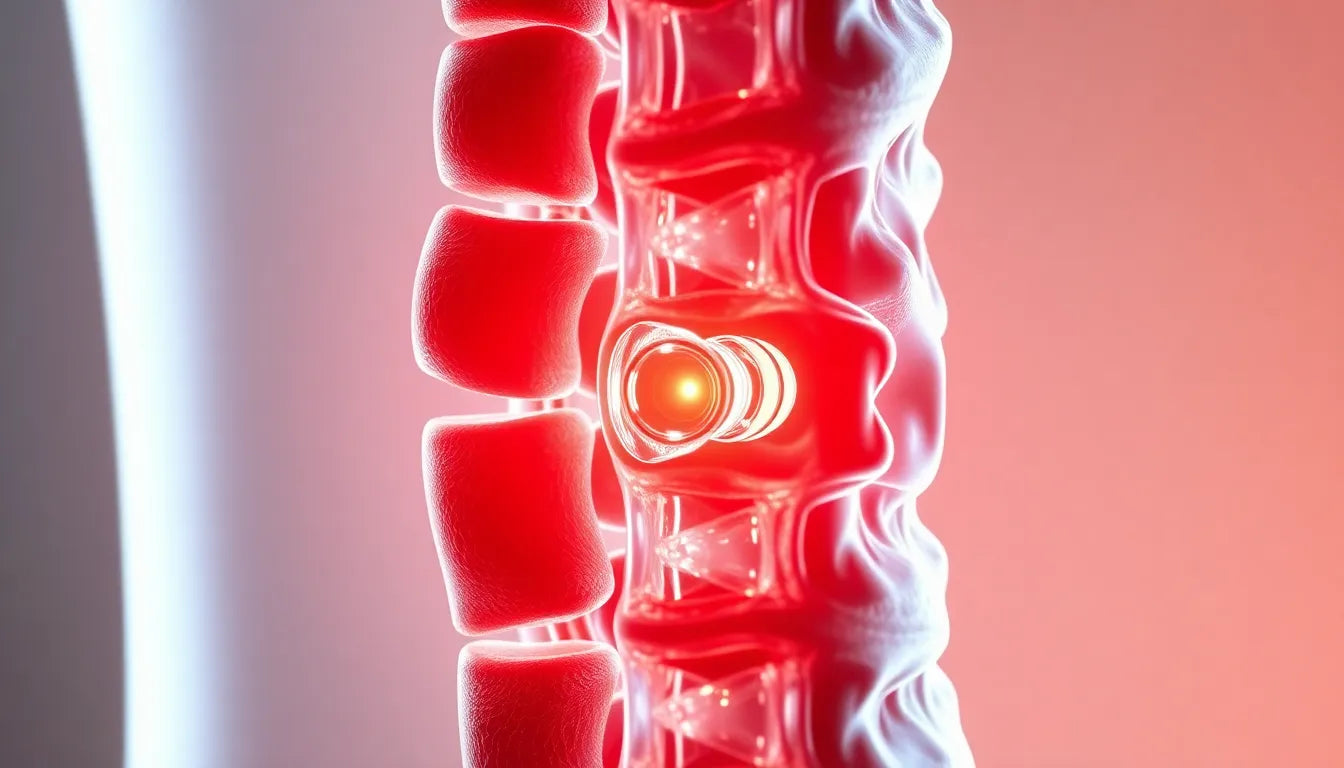Understanding the duration of a herniated disc's healing process begins with a fundamental grasp of what a herniated disc is and how it affects the body. Essentially, a herniated disc occurs when the soft inner gel of a spinal disc protrudes through its tougher exterior, often leading to pain, numbness, or weakness in the limbs. This condition can significantly impact the spine and surrounding nerves, causing a range of symptoms that can disrupt daily activities and reduce mobility. The prevalence of herniated discs is notable, with many individuals experiencing this condition at some point in their lives, underscoring the importance of understanding its effects and recovery process.
importance of recovery timelines
The question of how long it takes for a herniated disc to heal is central to anyone affected by this condition. Recovery timelines are crucial not only for setting realistic expectations but also for planning effective treatment strategies. Knowing the likely duration of healing can help individuals manage their daily activities, reduce anxiety, and make informed decisions about their health care options. It is essential to recognize that while some people may experience relief relatively quickly, others might face a more prolonged recovery journey.
overview of the recovery journey
Healing from a herniated disc is not a one-size-fits-all process. It varies greatly among individuals and is influenced by several factors, including the severity of the herniation, age, overall health, and adherence to treatment plans. Generally, the recovery journey can be divided into stages: the acute stage, the subacute phase, and long-term management. Each stage presents its own set of challenges and milestones, guiding individuals through the healing process. Understanding these stages can provide a clearer picture of what to expect and how to navigate the path to recovery.
In conclusion, while the duration of a herniated disc's healing can be unpredictable, having a framework for recovery can empower individuals to take proactive steps toward healing. The journey may be challenging, but with the right information and support, many people can return to their normal activities and improve their quality of life.
typical recovery timelines for herniated discs
The journey to recovery from a herniated disc is often segmented into distinct phases, each characterized by varying levels of pain and mobility. Understanding these stages can provide a clearer picture of the healing process and set realistic expectations for those affected.
acute stage: 1-2 days to 2 weeks
The acute stage is the initial phase following a herniated disc injury. During this period, individuals typically experience the most severe pain and inflammation. These symptoms can be quite debilitating, often restricting movement and significantly impacting daily activities. Fortunately, this stage is also when the body's natural healing processes begin to take effect. Many individuals notice a reduction in pain and an improvement in symptoms within this timeframe, as the initial inflammation starts to subside.
subacute phase: 2-6 weeks
As the body progresses into the subacute phase, there is generally a noticeable decrease in pain and a gradual improvement in mobility. This phase is crucial for recovery, as it often allows individuals to resume some normal activities and begin rehabilitation exercises. During this time, the focus is on reducing discomfort and enhancing function, which can be achieved through physical therapy and other conservative treatments. Many people find that with proper care and adherence to a treatment plan, they can return to a semblance of their pre-injury lifestyle by the end of this phase.
stabilization and long-term recovery: 6-12 weeks and beyond
Most herniated discs heal within 2 to 8 weeks; however, full recovery can extend into several months, depending on individual circumstances. The stabilization phase often sees continued improvement in symptoms, with many individuals achieving significant pain relief and functional recovery. During this period, the body continues to heal, and the process of disc resorption may occur, where the herniated material is naturally absorbed by the body. This phase is essential for long-term recovery, as it sets the foundation for preventing future injuries and maintaining spinal health.
factors influencing herniated disc recovery
The duration of recovery from a herniated disc can vary significantly from person to person, influenced by a range of factors. Understanding these can help tailor a more effective and personalized recovery plan.
individual factors
Age, overall health, and the severity of the herniation play pivotal roles in recovery timelines. Younger individuals with good health often experience quicker recoveries, while older adults or those with underlying health conditions may face prolonged healing periods. Additionally, the extent of the herniation and the level of nerve involvement can impact the speed and completeness of recovery. Commitment to rehabilitation and lifestyle modifications, such as maintaining a healthy weight and practicing good posture, are also critical in influencing recovery outcomes.
medical interventions
Medical interventions such as physical therapy, pain management, and, in some cases, surgery, can significantly affect recovery duration. Physical therapy is particularly beneficial in accelerating recovery and preventing recurrence by strengthening the muscles that support the spine and improving flexibility. Pain management strategies, including medications and alternative therapies, can help alleviate discomfort and facilitate a more active recovery process. In severe cases where conservative treatments fail to provide relief, surgical options may be considered, though most herniated discs do not require surgery.
rehabilitation and physical therapy for optimal recovery
Engaging in a structured rehabilitation program is essential for optimal recovery from a herniated disc. Physical therapy plays a crucial role in not only speeding up the healing process but also in preventing future disc issues. A well-designed exercise regimen can help strengthen the core muscles, improve posture, and enhance flexibility, all of which are vital for spinal health. Additionally, ergonomic adjustments, such as using supportive chairs and maintaining proper body mechanics during activities, can further support the healing process and reduce the risk of recurrence.
In conclusion, while the path to recovery from a herniated disc can be challenging, understanding the typical timelines, factors influencing healing, and the importance of rehabilitation can empower individuals to take proactive steps toward a healthier spine. With the right approach and support, many people can achieve significant improvement and return to their normal activities.
long-term management and prevention strategies
Once the initial recovery from a herniated disc is achieved, it is crucial to focus on long-term management and prevention to maintain spinal health and prevent recurrence. Post-recovery strategies play a significant role in ensuring that individuals continue to lead active and pain-free lives.
post-recovery strategies
Continued physical therapy is essential even after the initial recovery period. Engaging in regular exercises designed to strengthen the core muscles and improve flexibility can help support the spine and reduce the risk of future herniations. Additionally, maintaining proper posture, especially during activities that involve lifting or prolonged sitting, is vital for spinal health. Keeping a healthy weight can also alleviate unnecessary pressure on the spine, further aiding in long-term recovery.
lifestyle adjustments
Incorporating ergonomic aids into daily life can significantly impact the management of spinal health. Using supportive chairs, ergonomic desks, and ensuring proper alignment during sleep can prevent undue stress on the spine. Lifestyle changes, such as incorporating regular physical activity and avoiding smoking, can also contribute to overall well-being and reduce the likelihood of disc-related issues.
chronic cases
For those experiencing symptoms beyond a year, it is essential to remain hopeful, as improvement is still possible. Chronic cases may benefit from ongoing medical evaluation and tailored rehabilitation programs. Evidence suggests that even after two years, some individuals experience significant improvements, highlighting the potential for late-stage healing.
frequently asked questions
Can a herniated disc heal without surgery?
Most herniated discs improve with conservative treatment methods, such as physical therapy and pain management, and do not require surgical intervention. The body often naturally absorbs the herniated material over time, leading to symptom relief.
What factors affect herniated disc healing?
Several factors can influence the healing process of a herniated disc, including the individual's age, overall health, the severity of the herniation, and adherence to prescribed treatment plans. Lifestyle choices, such as maintaining a healthy weight and practicing good posture, also play a crucial role.
How can I prevent recurrence of a herniated disc?
Preventing recurrence involves focusing on strengthening exercises that support the spine, making ergonomic adjustments in daily activities, and maintaining a healthy lifestyle. Regular physical activity and being mindful of posture can significantly reduce the risk of future herniations.
When should I seek medical evaluation for a herniated disc?
It is advisable to seek medical evaluation if symptoms persist or worsen despite conservative treatment efforts. Additionally, if there is a significant impact on daily activities or if new symptoms, such as numbness or weakness, occur, professional medical advice should be sought to determine the appropriate course of action.
Sources
- ADR Spine (Dr. Lanman). "Herniated Disc Recovery Phases."
- More Good Days. "Hope for Chronic Herniated Disc Cases."
- PhysioRX. "Herniated Disc Resorption and Rehabilitation."
- Spine MD. "Stage-Based Timeline for Herniated Discs."
- Illinois Pain Institute. "Herniated Disc Healing Ranges and Considerations."


















